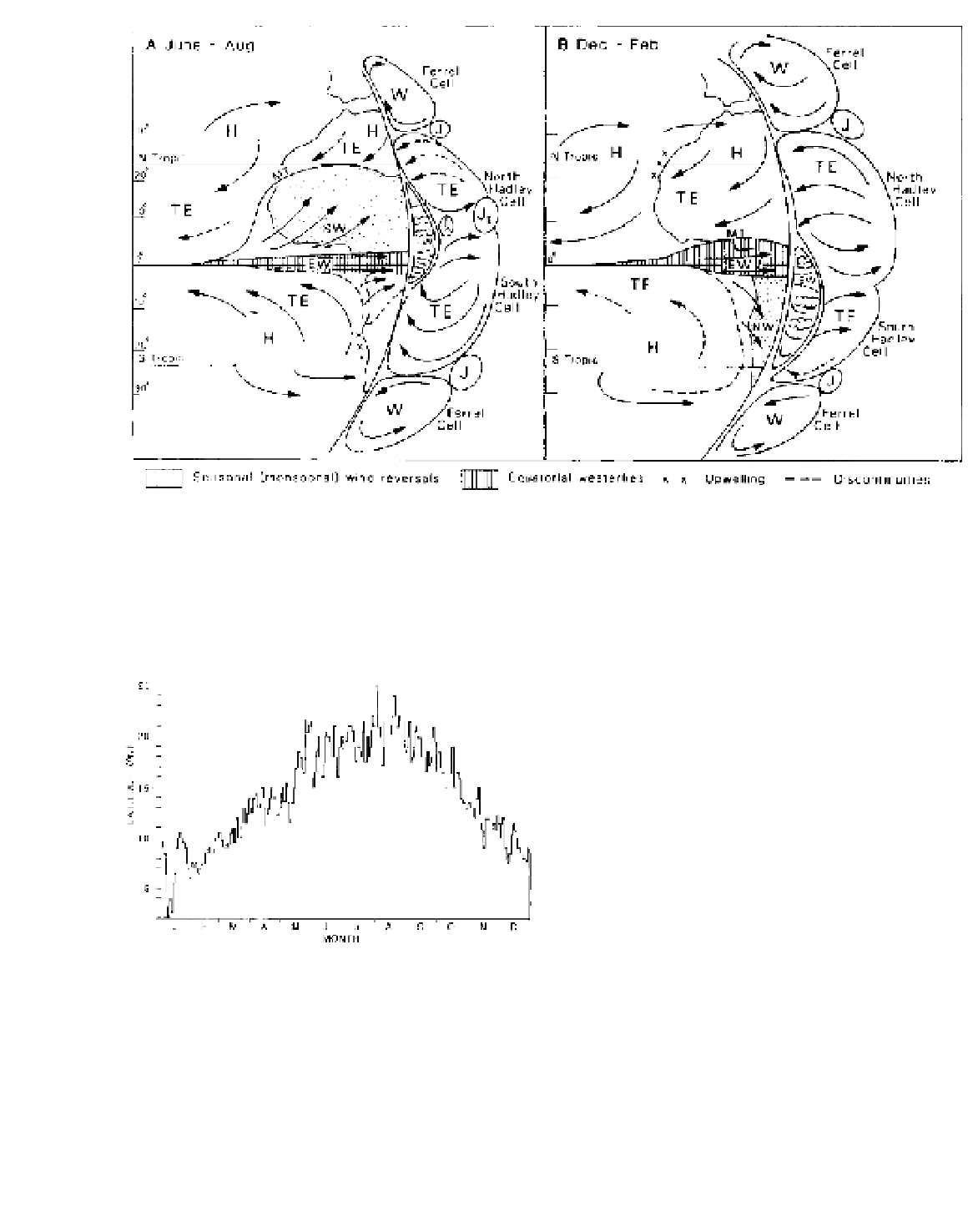Geoscience Reference
In-Depth Information
Figure 11.38
The major circulation in Africa in (A) June to August and (B) December to February. H: subtropical high-pressure cells;
EW: equatorial westerlies (moist, unstable but containing the Congo high-pressure ridge); NW: the northwesterlies (summer extension
of EW in the southern hemisphere); TE: tropical easterlies (trades); SW: southwesterly monsoonal flow in the northern hemisphere;
W: extratropical westerlies; J: subtropical westerly jet stream; J
A
and J
E
: the African easterly and tropical easterly jet streams; and MT:
monsoon trough.
Source
: From Rossignol-Strick (1985), by permission Elsevier Science Publishers BV, Amsterdam.
northeasterlies (i.e. the 2000-m deep
Harmattan
flow)
blow clockwise outward from the subtropical high-
pressure centre. They are compensated above 5000 m by
an anticlockwise westerly airflow that, at about 12,000
m and 20 to 30°N, is concentrated into a subtropical
westerly jet stream of average speed 45 m s
-1
. Mean
January surface temperatures decrease from about 26°C
along the southern coast to 14°C in southern Algeria.
With the approach of the northern summer, the
strengthening of the South Atlantic subtropical high-
pressure cell, combined with the increased continental
temperatures, establishes a strong southwesterly airflow
at the surface that spreads northward behind the
monsoon trough, lagging about six weeks behind the
progress of the overhead sun. The northward migration
of the trough oscillates diurnally with a northward
progress of up to 200 km in the afternoons following a
smaller southward retreat in the mornings. The north-
ward spread of moist, unstable and relatively cool
southwesterly airflow from the Gulf of Guinea brings
rain in differing amounts to extensive areas of West
Africa. Aloft, easterly winds spiral clockwise outward
Figure 11.39
The daily position of the monsoon trough at
longitude 3°E during 1956. This year experienced an exceptionally
wide swing over West Africa, with the trough reaching 2°N in
January and 25°N on 1 August. Within a few days after the latter
date, the strongly oscillating trough had swung southward through
8° of latitude.
Source
: After Clackson (1957), from Hayward and Oguntoyinbo
(1987).

